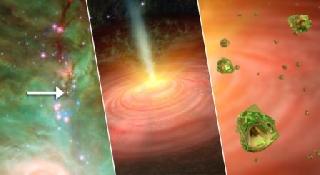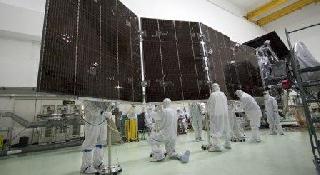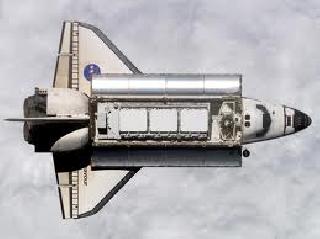
NASA's Spitzer Space Telescope detected tiny green crystals, called olivine, thought to be raining down on a developing star. Photo by NASA/JPL-Caltech/University of Toledo
PASADENA, CALIFORNIA (BNS): Tiny crystals of a green mineral called olivine are falling down like rain on a burgeoning star, according to observations from NASA's Spitzer Space Telescope.
This is the first time such crystals have been observed in the dusty clouds of gas that collapse around forming stars.
Astronomers are still debating how the crystals got there, but the most likely culprits are jets of gas blasting away from the embryonic star, they said.
"You need temperatures as hot as lava to make these crystals," said Tom Megeath of the University of Toledo in Ohio, principal investigator of the research.
"We propose that the crystals were cooked up near the surface of the forming star, and then carried up into the surrounding cloud where temperatures are much colder, and ultimately fell down again like glitter."
Spitzer's infrared detectors spotted the crystal rain around a distant, sun-like embryonic star, or protostar, referred to as HOPS-68, in the constellation Orion. The crystals are in the form of forsterite.
The findings might also explain why comets, which form in the frigid outskirts of the solar system, contain the same type of crystals, they said.
The Spitzer observations were made before it used up its liquid coolant in May 2009 and began its warm mission.
 Previous Article
Previous Article Next Article
Next Article











The Indian Air Force, in its flight trials evaluation report submitted before the Defence Ministry l..
view articleAn insight into the Medium Multi-Role Combat Aircraft competition...
view articleSky enthusiasts can now spot the International Space Station (ISS) commanded by Indian-American astr..
view article